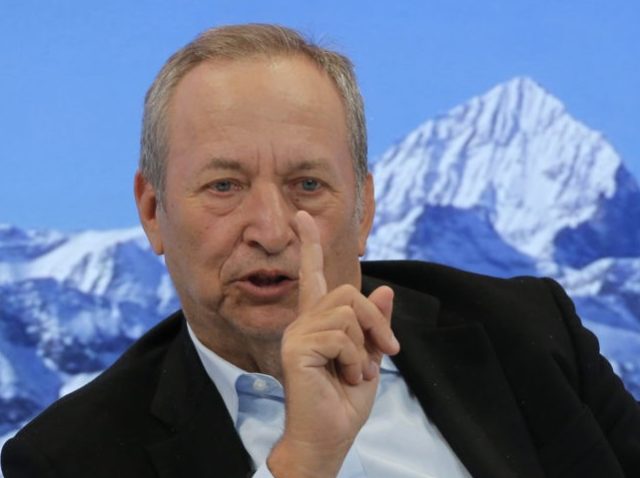President Donald Trump’s budget proposal forecasts that the administration’s policies will accelerate the American economy into an era of 3 percent growth for as far as the eye can see. That’s unleashed a torrent of criticism from mainstream economists who can’t stand the idea that Trump could grow the economy at such as fast pace.
According to the budget documents released by the White House Tuesday, the U.S. gross domestic product will reach an annual growth rate of 3% by 2021 and then cotinue growing at that pace. This economic acceleration is the key to the Trump administration’s plans to cut taxes while also reducing the budget deficit.
“Everything is keyed to getting us back to 3 percent,” White House budget director Mick Mulvaney told reporters this week.
Even though the average growth rate since the post-World War II era has been 3.2 percent, the administration’s critics are skeptical or even mocking of its GDP forecast. They point out that last time the economy grew at 3 percent in a year was 2005 and ever since the Great Recession the economy appears to be on a permanently slower track. Official estimates from the Office of Management and Budget and the Federal Reserve, as well as those by many private forecasters, see growth closer to 2 percent or even lower.
Former Treasury Secretary Larry Summers said it was only possible to believe in the Trump administration’s growth forecast “if you believe in tooth fairies and ludicrous supply-side economics.” Former OMB head Jim Nussle said 3 percent is “unrealistic.” Alice Rivlin, former vice chair of the Federal Reserve and founding director of the Congressional Budget Office, was more polite, saying that “more responsible” projections would forecast growth around 2 percent.
The backlash against Trump’s growth forecast stands in marked contrast to the reaction to the assumptions in Barack Obama’s first budget. The Obama administration’s economic projections were constructed by economist Christina Romer, the head of the White House Council of Economic Advisers. Romer assumed GDP would grow by 3.2 percent in the second year of the administration, followed by 4.0 percent and then 4.6 percent. As it turned out, growth never rose above 3 percent during the administration.
This failure may explain why so many mainstream economists think 3 percent growth is out of reach. In the wake of the financial crisis and the Great Recession, policy-makers at the Federal Reserve launched a series of interventions intended to stimulate more vigorous economic growth. Even when combined with a rising federal budget deficit, however, these monetary policy moves had much less effect than expected. Many economists concluded that we had entered an era of long-term slower growth. Larry Summers famously described it as an era of “secular stagnation.”
There always was a hint of self-aggrandizing rationalization in this view. When the mainstream economists saw that the economy was not responding to monetary policy and as strongly as their theory said it should, they decided that something was wrong with the economy rather than their theory. It was the American economy that was broken rather than American economics.
Trump’s budget once again provides a challenge to their views. If it turns out that a combination of tax cuts, better trade policies, a revival of manufacturing and regulatory reform can spur faster economic growth, mainstream economists will appear to be the court of a naked emperor. Not only will their policies have been proven ineffective, their diagnosis of our economic malaise will have been shown to be wrong.
No wonder they are so mad.

COMMENTS
Please let us know if you're having issues with commenting.